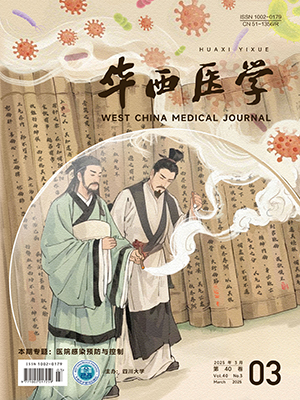| 1. |
Morykwas MJ,Argenta LC,Shelton-Brown EI,et al.Vacuum-assisted closure:a new method for wound control and treatment:animal studies and basic foundation[J].Ann Plast Surg,1997,38(6):553-562.
|
| 2. |
冯友贤.血管外科学[M].2版.上海:上海科学技术出版社,1992:506-507.
|
| 3. |
王宁华.疼痛定量评定的进展[J].中国临床康复,2002,6(18):2738-2739.
|
| 4. |
李伟,史志.下肢静脉曲张伴慢性溃疡32例外科治疗分析[J].重庆医学,2007,36(21):2208-2210.
|
| 5. |
王新江,马文龙,杜志军,等.VSD结合游离植皮治疗儿童下肢大面积皮肤缺损[J].组织工程与重建外科杂志,2013,9(1):35-36.
|
| 6. |
韩家宏,雷楚林,李仁鹏.负压封闭引流技术在下肢大面积皮肤缺损合并感染的应用[J].组织工程与重建外科杂志,2010,6(4):206-207.
|
| 7. |
曲家富,闫荣亮,王良,等.负压封闭引流技术结合肌瓣转移游离植皮治疗小腿及足踝部软组织缺损伴骨外露[J].中华创伤骨科杂志,2013,15(4):316-319.
|
| 8. |
Furlanetti LL,De Oliveira RS,Santos MV,et al.Multiple cranial burr holes as an alternative treatment for total scalp avulsion[J].Childs Nerv Syst,2010,26(6):745-749.
|
| 9. |
王静,秦霞,余艳萍,等.负压技术联合湿性敷料在慢性伤口护理中的应用[J].护理研究,2014,28(2):217-218.
|
| 10. |
Andros G,Armstrong DG,Attinger CE,et al.Consensus statement on negative pressure wound therapy (V.A.C.Therapy) for the management of diabetic foot wounds[J].Ostomy Wound Manage,2006,Suppl:1-32.
|
| 11. |
蒋琪霞,刘云,徐薇,等.负压伤口治疗关键技术的研究进展[J].医学研究生学报,2007,20(6):656-659.
|
| 12. |
Steiling H,Werner S.Fibroblast growth factors:key players in epithelial morphogenesis,repair and cytoprotection[J].Curr Opin Biotechnol,2003,14(5):533-537.
|
| 13. |
Dykes PJ,Heggie R,Hill SA.Effects of adhesive dressings on the stratum corneum of the skin[J].J Wound Care,2001,10(2):7-10.
|
| 14. |
Maume S,Van De Looverbosch D,Heyman H,et al.A study to compare a new self-adherent soft silicone dressing with a self-adherent polymer dressing in stage Ⅱ pressure ulcers[J].Ostomy Wound Manage,2003,49(9):44-51.
|
| 15. |
White R.A multinational survey of the assessment of pain when removing dressings[J].Wounds UK,2008,4(1):14-22.
|




